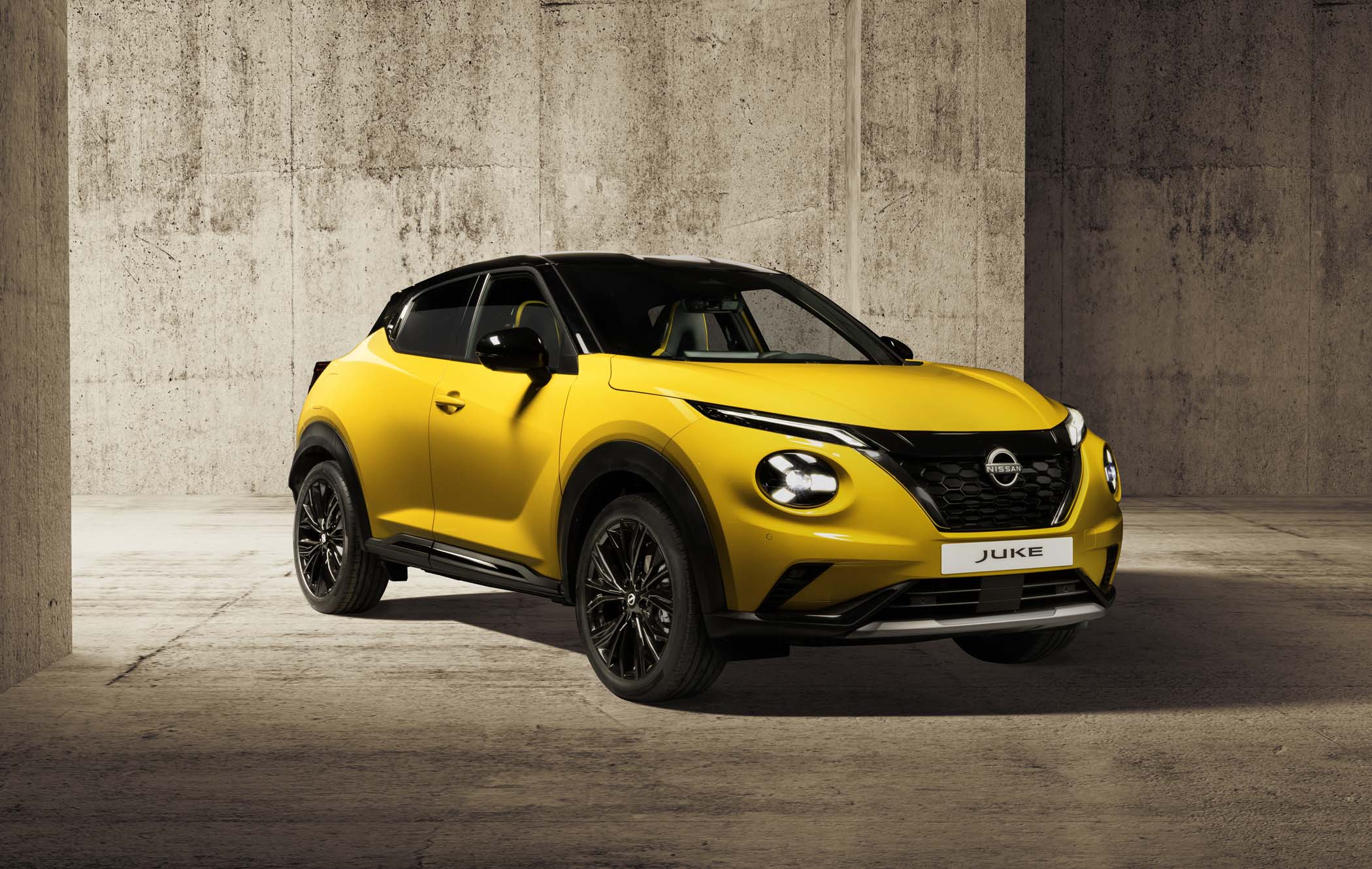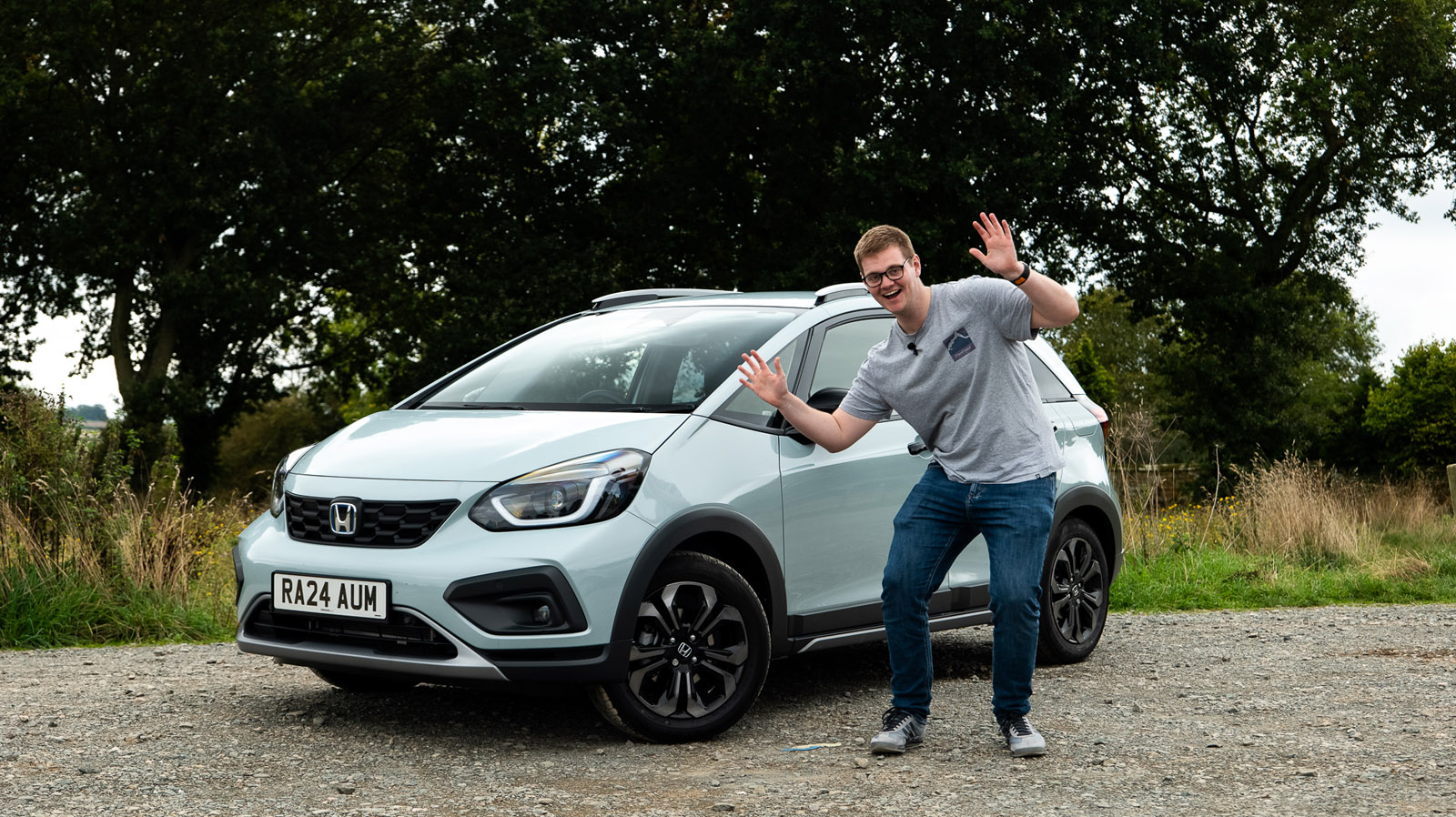Honda HR-V review
The latest hybrid-only Honda HR-V is everything you could ever ask of a small SUV – efficient, well-built and packed with all the tech you need to tackle a long trip. But are its thoughtful touches, comfort and reliability enough to make it stand out against hundreds of other crossovers? Read our Honda HR-V review to find out.
Pros
- Clever hybrid system with strong efficiency
- Versatile boot with Magic Seat storage
- Solid reputation for reliability
Cons
- Boot capacity is on the smaller side
- Not the most exciting option
Interior
Our rating: 7/10
Driving position
Although it’s a pretty compact car, the Honda HR-V is still a crossover, and that means it benefits from a high seating position for a better view of the road ahead.
Honda says it’s raised the driving position by about 10mm compared with its predecessor, so you get more of the SUV feel without actually feeling like you’re driving a bigger car.
Slim A-pillars (between the windscreen and the front doors) and a flatter bonnet further aid manoeuvrability, and we also noticed the wing mirrors feel pretty tall, so you should have no trouble gauging your surroundings when reversing.
In terms of the actual driver ergonomics, Honda’s done some excellent work in making the seats as comfy as possible with support in all the right places, and the steering wheel adjusts up/down and in/out for a spot-on position.
Tech and features
The HR-V is less about being showy and more about being truly functional, so while something like the second-generation VW T-Roc has a super-minimalist touchscreen, Honda retains some old-school tech that just works.
By this, we mean physical controls for things like the climate control, seat heating and core radio controls, which means you can make adjustments without taking your eyes off the road at all.
That’s not to say you’re missing out on Apple CarPlay or Android Auto, which comes as standard on the nine-inch infotainment display.
Put it this way – if you’re buying your car to have best-in-class technology, you may be looking in the wrong place, but if you need everything on-board to just work, this is where you need to be.
All models have front and rear parking sensors, a reversing camera, keyless entry and adaptive cruise control, so even entry-level Elegance models offer strong value for money.
Performance
Our rating: 6/10
Engines and power
First thing’s first, the Honda HR-V is by no means a performance car. That’s simply not what it was designed to do.
But, it does have some clever tech that not many other cars in this space do, and that’s the super impressive hybrid system.
A 1.5-litre petrol engine is paired with two electric motors to ensure you’ve always got instant power on tap.
The 0-62mph time of 10.6 seconds is proof this is no supercar, but it never feels out of its depth, even on a motorway slip road.
It uses a CVT automatic gearbox for maximum efficiency, which means there’s no set number of gears, but the computer does adjust the revs to make it sound as if it does. It just makes it feel a little bit smoother.
Handling and ride comfort
The HR-V’s suspension has been tuned for comfort, so if you’re spending time going over speed bumps in town, the refined ride quality will be very welcomed.
It might be on the taller side (compared with a hatchback, at least), but it still feels pretty rigid in the corners.
On the whole, the Honda HR-V feels reasonably agile for a crossover, though it’s not quite as fun to drive as a Ford Puma.
At higher speeds, cabin quietness has been improved with extra insulation and thicker panels. It gives the car a more premium and well-rounded feel where others maybe lack.
Practicality
Our rating: 8/10
Boot space
There’s 319-335 litres of boot space in the Honda HR-V depending on trim level, so it’s on the smaller side.
If boot size by volume is important to you, look elsewhere, but if having an easy-to-access boot is more your thing, the HR-V delivers.
There’s a flat loading floor to slide things in, and the boot opening is nice and wide, so it never feels like a struggle.
Even when you fold down the rear seats, the bases tilt forwards slightly to make way for the backrests, making a totally flat floor.
Higher trim levels also have hands-free tailgate access with walk-away close, so you’ll never need to lift a finger.
Although it’s technically not part of the boot, Honda’s Magic Seats do appear in the HR-V (though they’re somewhat of a dying breed).
By lifting up the rear seat bases cinema seat-style, you can carry bigger items in the back footwells. For example, you could just about fit a bike inside (with a wheel off) and still be able to fill the boot with all your camping gear.
Rear seats
If you plan on carrying people – not bikes – in the back, it’s good news all around.
Rear legroom is up by 35mm compared with the previous HR-V, and there’s more of a recline in the seats for better comfort too.
It’s a bit of a shame that the middle seat’s seatbelt comes down from the roof like a noughties MPV – it makes it feel like a cut corner.
Storage solutions
The HR-V isn’t short on interior space, with a cubby in the centre console, space for a phone (and wireless charging on top-spec models), storage under the armrest and twin cup holders up front.
The rear doors only have cutouts for bottles, which feels like some space has been wasted, and the front door bins don’t offer a whole lot more space either.
But in terms of actual overall storage inside the HR-V, there’s a home for everything.
Safety
All trims come with Honda SENSING driver aids, including adaptive cruise control, lane keeping, traffic sign recognition and forward collision warning.
The latest generation also has an updated wide-angle HD camera with AI to improve pedestrian, cyclist and motorcyclist detection at night.
This got the HR-V a four-star Euro NCAP rating in 2022.
Running costs
Our rating: 9/10
Fuel economy
Honda claims 52.3mpg from the HR-V’s 1.5-litre self-charging hybrid system, which translates to 460 miles of driving from a full tank (40 litres).
During our week of testing the HR-V, we were able to virtually match the claimed fuel economy, which is a testament to this car’s outstanding efficiency.
Reliability
Honda has well over two decades’ experience building hybrids, dating back to the Insight, and the latest e:HEV system is just an advancement of everything it’s learned since then.
The 1.5-litre e:HEV system is already a huge hit in the Jazz, and an uprated 2.0-litre version is just as popular in the ZR-V.
On the whole, Honda’s reputation for bulletproof engineering and long-term durability is impressive, so if you want something that’s going to last a long time, the HR-V is certainly one model worth considering.
The verdict
Interior
7/10
Performance
6/10
Practicality
8/10
Running costs
9/10
The Honda HR-V isn’t here to thrill you, and we think that could be its success story. Instead of grabbing you with headline figures and disappointing you during ownership, the HR-V is consistently capable across all metrics.
We were highly impressed with the HR-V’s real-world fuel economy, which proves that you don’t need a diesel car to go long distances on one tank.
On the whole, it’s a cleverly packages and well-thought-out crossover that anyone who values practicality and peace of mind should consider.


